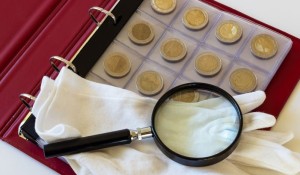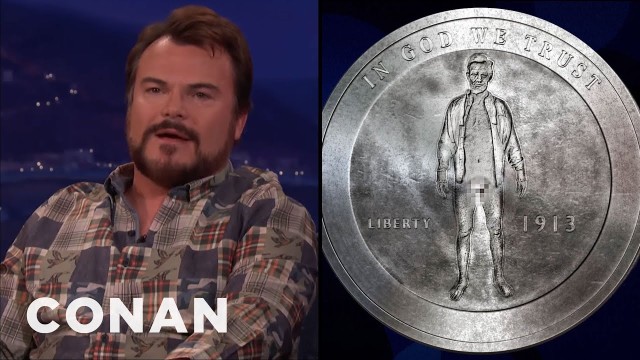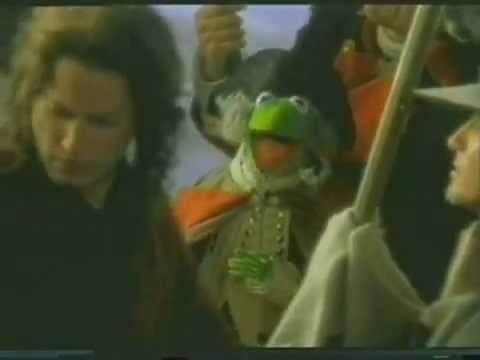The Future Of Coin Collecting Looks Bright
As a 30-something coin collector, I'm not necessarily representative of the median age of coin collectors and coin investors. In fact, I'm probably a good 20 years younger than most of the people I see enjoying the coin shows I attend. But I'm by no means the youngest guy on the bourse. In fact, I'm a good 20 years older than many of the so-called "YNs" (that's "Young Numismatists" in coin-speak) who I have had the pleasure of meeting at coin events throughout my home state of Florida. They come as Boy Scouts and Girl Scouts, they serve for show officials as pages, they attend as regular guest with their parents, they enter exhibits in coin contests and, believe it or not, many of these young guys and gals are even serving as coin dealers. Imagine that!
That's in part why I disagree with any claims from the occasional naysayer that coin collecting, as a hobby, is dying. What purpose such comments serve I don't really know. And maybe you've come across some individuals who believe the hobby is on the decline due to purportedly smaller number of attendees at some coin shows, fewer people popping into coin shops, a few longtime hobby publications that have seen shrinking subscriber bases, and apparently fewer people collecting certain classic coin series. Are any of these reports true? Could be.
The More Things Change…
But what I do know to be true is that the dynamics of the coin hobby is shifting in recent years, and not for any one reason. When I began collecting coins in the early 1990s, I remember a few key things about the hobby, the people who I also then called fellow coin collectors, and technology:
- There were still a great many (older) collectors who were born in the early 1900s and grew up collecting 19th-century type coins – they apparently carried these collecting traits into their elderly years.
- There was yet no 50 States Quarter program, let alone "golden" dollars, America the Beautiful Quarters, Presidential $1 coins, or Native American dollars.
- Save for the ongoing commemorative coin program, there had been no significant updates to circulating United States coins since the early 1980s, when the then-last Susan B. Anthony dollars were issued.
- The commercial version of the internet pretty much everyone takes for granted was in its infancy and was scarcely used by people whose names weren't Gates, Berners-Lee, Jobs, or Wozniak.
- There was no eBay. Let me repeat that: there was no eBay.
- Coin shows and coin clubs were your social "networks" then – not Facebook groups, chat rooms, or discussion boards.
- Third-party coin certification was still a relatively new, novel concept and special labels (such as "First Strikes," "Early Releases," and other limited-edition designations) were still many years off.
- Registry set collecting was not a concept.
- Collecting anything except proof versions of bullion coins, such as American Silver Eagles and American Gold Eagles, was pretty much unheard of.
- The United States Mint catalog mainly consisted of annual coin sets, commemoratives, and a small variety of bronze medals – and that was about it.
- World mints, such as the Royal Canadian Mint, Royal British Mint, and Perth Mint, weren't producing umpteen-thousand types of non-standard coinage.
- Europe didn't have the "euro" – so world collectors could still specialize in collecting distinct coinage from many of the Western European nations whose coinage attracted a fairly large number of collectors both in the United States and abroad.
- Counterfeit coins were – for the most part – still relatively easy for many intermediate and expert collectors to detect.
- Bitcoin wasn't a word, nor were the following: Facebook, Pokemon, Snapchat, iPhone, or YouTube.
That last point will be of particular note in just a few moments. But stop and take a look at that list for a moment… That was the world in the early 1990s. Well, at least it's a snap of what culture – numismatic and otherwise – was like a little less than 30 years ago. I don't know about you, but it's a world that surely looks different than the one we've come to know in recent years. Today's culture seems to have so many more "distractions" than we had years ago.
Those "distractions" include many of the terms I mentioned in that last item of the list. You know, "Bitcoin, "Facebook," "Pokemon," "Snapchat," "iPhone," and "YouTube." What about Bitcoin? What I know about is I have several numismatic friends who invested in that and other cryptocurrencies. Will they keep their money parked in digital currency or will they reinvest it in gold, silver, and other, more traditional assets, such as coins and bullion? I don't know. But if you're on limited funds and bought a Bitcoin for $10,000, $12,000 or $18,000 a throw, I've got a good feeling your Liberty Seated coin funds are a little lower now than they would've otherwise been.
And Facebook, Snapchat, YouTube, and Pokemom? Well, they may not cost as much to enjoy as it does to buy some Bitcoins, but how much time do these fun diversions take? I'll tell you this – it's pretty easy to spend a few hours on YouTube reliving my childhood watching old Sesame Street skits. But let's keep that between just you and me, OK? Ok…
Then we have iPhones, iPads, iPods, and Tide Pods… The first three are hazardous to your wallet. The last one, if eaten, is just hazardous to your health – and eating Tide Pods has become an actual pastime (or dare, rather) among much of today's youth. Why is beyond me, but – paraphrasing a quote from a famous meme – who would've thought we'd see the time when kids would be washing their own mouths out with soap?
Many people blame the rise in expensive technology on why more young people are spending less money on coins. That, too, seems plausible. Then again, I was a Nintendo freak in the early 1990s when I began collecting coins and was wont to spend $40 or $50 apiece on the latest installment of Super Mario Brothers or the Legend of Zelda back then. So if expensive technology has lured young coin collectors from the hobby, I was at least still able to split my attention between two pastimes – coins and video games.
So, what's going on? What's happening to coin collecting? Is it really dying? Or is it just changing? I'm no rocket scientist, but I'm pretty sure coin collecting isn't dying at all. It's just a hobby in transition, and I'll tell you why…
Is Coin Collecting Being Reinvented?
Nothing stays the same forever, and that can be said for coin collecting. Compare the hobby as I first knew it in the 1990s to the numismatic scene of today, and there are plenty of differences – several of which I've already noted earlier in this article. What do these changes mean for the hobby? I believe they are symptoms of a hobby in flux, a pastime that is evolving.
Yes, fewer people are attending some coin shows, but that doesn't mean the coin show is dead. My home club, the Florida United Numismatists hosted some 8,000 people at its latest public event ranking it as one of the largest shows in the United States. Other large annuals shows, including those held by the American Numismatic Association, Whitman Publishing, and other time-honored numismatic organizations are also hoards. The situation overseas is equally encouraging, with thousands attending Numismata Munich, an annual coin show in Germany and the Hong Kong International Coin Convention, too.
Ah, and what about auctions? Yes, it seems there are fewer occupied seats at some of the headlining auctions these days, but take a look at the hammer prices. Records are still being broken, and people are still buying expensive coins. What's changed is that buyers no longer have to spend thousands of dollars boarding a plane and staying in a hotel just for the opportunity to bid on the coins he or she wants for her collection. The advent of online bidding affords Jolene Blow the chance to place an opening bid of $5 million on an 1804 Draped Bust silver dollar while she's slacked into a couch in her pajamas watching her favorite TV show.
Ditto for eBay. That's where just about every coin collector I know (including yours truly) buys his or her coins these days. Even some of the longtime coin dealers I know – those who once operated successful bricks-and-mortar coin shops, have moved their operations entirely online, for that's where they're having more market success these days. In fact, coin dealers across the board are moving to an online format, with many downsizing or closing their physical showrooms and reinvesting their business funds into building slick, beautiful websites where people from Brooklyn, New York to Queensland, Australia can shop for and buy coins at the same store without so much as having to put on a sock or shoe.
What these tech-savvy shoppers are buying is also changing. No longer are people confined to the same coins their grandparents would've collected 30 or 50 years ago. The age of the modern coin is here, and with it is a new market dynamic where American Eagle silver and gold coins, an ever-changing array of quarters and dollar coins, and a fresh slate of commemorative coins have gained appeal among the masses. Even coins such as the Roosevelt dime and Eisenhower dollar – once relegated to the low-price tier of the beginner market – has gained a foothold among registry set collectors, or those who amass collections of the highest-grading coins in a given series.
This isn't to say that coin collectors are forgetting the classics. Not in the least. Right here on CoinValues.com, I regularly receive questions and comments from those who wish to know what their Lincoln wheat pennies, Buffalo nickels, and Mercury dimes are worth. Yes, people still collect traditional coins and are as curious as ever about these series and their often-colorful stories. And what about the really old classics? I mean Draped Bust coinage, Liberty Seated coins, Early American coppers, and other legendary pieces? They're still commanding robust prices in auctions and at coin stores.
The Kids Are All Right…
At the height of the 50 States Quarters program in the early 2000s, the United States Mint famously estimated 100 million people – then more than one-third of the nation's population – collected coins. It's hard to say how many people collect coins these days, let alone how old – or young – they all are. It's pretty doubtful today's tally, if one were taken, would reflect a number quite so high, let alone presumably as young as the collector base in the early 2000s, when seemingly every grade-school child in the United States was popping 50 States Quarters into colorful cardboard maps and educational holders.
Yet, my personal social network of coin collectors, dealers, and hobby figures includes dozens upon dozens of folks who are about my age or younger. It might be merely an anecdotal statement, but at 36 years old – to be a numismatist – that says something good about the sizable group of folks in this hobby who are considered "youthful."
If there's any area of need in our hobby, it's to keep promoting coins as something that's "cool." So many folks seem to think of coin collecting as something people do when they're retired and too old to do anything else, like kayaking, backpacking through Europe, or even going to the local sports arena for a game. It's not hard to get why that perception persists. But it's there, and we need to get rid of it. If anything, coin collecting plays somewhat into the – dare I say it – "nerd" culture which – thankfully – is also becoming "cool" (thank you from the bottom of my heart, Big Bang Theory!) But we're going to need more people to get on TV screens – and those smartphone screens – who will help open the windows on our hobby and let some fresh air in.
Popular comedy actor Jack Black gave coins some hilarious press in his December 2017 appearance on the Conan O'Brien show (see video below).
Maybe he'd be game to shoot a hip public service announcement or two talking about why coins are "cool"? Hey, Kermit the Frog was once the official "spokesfrog" for the 50 States Quarters, so my idea isn't all that crazy…
As far as I'm concerned, I love coin collecting and never plan to leave. It's truly the hobby that lasts a lifetime. What I hope is that as I have kids in the coming years that they, too, will have an interest in the hobby or at the very least enjoy coins in a causal sense. They're little pieces of artwork that are also history we can carry in our hands. They're tributes to famous landmarks, historic events, and national heroes. They can transcend time and place, and resonating with collectors throughout the generations. Like August Saint-Gaudens's immaculately gorgeous double eagle gold coin, Adolph A. Weinman's timeless Walking Liberty half dollar, or any number of other artistically vaunted designs, coins have the power to inspire – even stun – and yet are small enough to fit in your pocket.
I know, I know… Coin collecting isn't what it used to be. But it doesn't have to be what it once was. It is what it is today. And if you ask me, the hobby is flourishing in ways few could imagine so many years ago. Technology enables us to reach more people than ever before. A widening variety of coins is giving collectors more choices than we could have previously dreamt. And the opportunities to give the next generation a leg up – and an invitation in – are vast, and they're here now. We don't need to shove the hobby in the faces of the young – all we need to do is inspire them. Show them the faces, places, and names on their coins. Connect coins to the world around them ("say, Johnny, see that statue? That's Caesar Rodney – the same guy riding that horse on your Delaware quarter"). Believe me, kid will take time for you – and for coins – if we make it interesting.
The next generation isn't on the way. They're here. And we're ready for them. There's lot of youth in our hobby today – teens, college students, quarterlifers, and 30-somethings. But there's always room for more. Let's give them the MS-70 welcome they deserve!
-
{{#owner}}
-
{{#url}}
{{#avatarSrc}}
{{name}} {{/url}} {{^url}} {{#avatar}} {{& avatar}} {{/avatar}} {{name}} {{/url}} - {{/owner}} {{#created}}
- {{created}} {{/created}}



